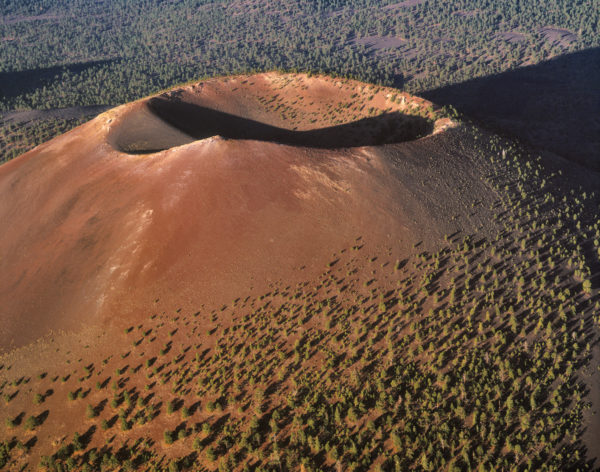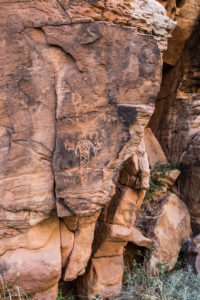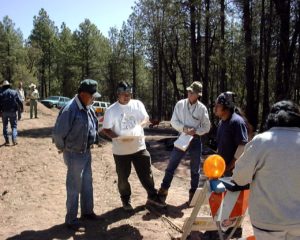
Transitions: Sarah Herr is New Desert Archaeology President
Incoming president Sarah Herr writes this week’s blog.
The featured image (top) is a reconstruction of the native settlement near the Spanish mission and mission garden at the base of A-Mountain in Tucson, by our own Rob Ciaccio.
On Tuesday, I became majority owner and president of Desert Archaeology, Inc. This is a tremendous honor. Desert Archaeology is one of a few strong, early-established cultural resources management-only firms in Arizona.
In the past 30 years, we have earned a strong local reputation for helping to reveal some of the iconic historic places of the Southwest, like the earliest field systems in North America, the plaza-oriented villages of O’odham ancestors, villages transformed by the eruption of Sunset Crater nearly a thousand years ago, the fragile Western Apache landscapes of central Arizona, and the fortress and mission built by Spanish soldiers and priests in early Tucson. Archaeologists on our staff are well-regarded nationally, and even internationally, for their contributions to archaeological scholarship on a wide range of topics that you will learn more about in our forthcoming blogs.

Desert Archaeology’s Wupatki Project investigated sites in the shadow of Sunset Crater, near Flagstaff, Arizona. Photo by Adriel Heisey.
Even as this transition marks a point of change in the company, there will be a continuity of many shared values, one of which is that good research and creativity can create a good business. At Desert, research isn’t a luxury, it’s a motivation. Together, we have invested our careers in understanding these arid landscapes, and view projects large and small as chances to learn, evaluate, and expand our understanding of the ancient places of the Southwest. We understand the strengths and weaknesses of certain projects for answering our particular questions. As we work on compliance projects, we aren’t intent on digging and collecting ‘everything’ and putting it into boxes that sit on museum shelves. We are intent on finding that fraction of everything that will make the greatest contribution to knowledge.

A shamanic figure depicted in rock art along Silver Creek, Arizona. Photo by Henry Wallace.
When we are successful, we can tell compelling stories about the shamanic roots of rock art, the horrors of dental work with stone tools, wars in Arizona before people were here to write about them, trails walked from the desert to the sea, the recipes of women, the reverence for grandparents, the construction of barrios in 1100 A.D and 1940, and the types of cuttlefish imported from China by 19th-century businessmen—thousands of stories of the struggles and successes of the people who lived in these places before us. These types of stories answer questions about who we are and where we live, giving modern people connections to places and a sense of wonder. When done well, they add public benefit and value to our clients’ own plans for developing their communities.
Like Bill, I look forward to promoting the relevance of archaeology. To me, archaeology is never a goal in and of itself, but a service and way to engage with communities. The public laws under which we work encourage outreach to all the people affected by our projects—both the people who currently live on the land and the people who used to live on the land.

Crew member Gregg Henry describes our excavations to his grandfather, Levi DeHose, while Roger Anyon and Jefferson Gatewood listen. Photo by T. J. Ferguson.
Some of my favorite moments in the field are when our tribal crew members help to find the artifacts and houses of their predecessors. When their elders visit we learn that these are places that they have known of but not had the chance to visit, and the conversation that ensues connects small objects to deep histories. We create jobs for students working their way through school, and for workers and professionals, and the money from our budgets goes to their families. We debate and share and build on the work of our archaeological colleagues in the university, government agencies, and companies similar to our own. And we explore how work with artists and scientists helps to translate the fragments of the past that we uncover into richer understanding.
Today is Inauguration Day in the U.S., and we know bigger changes than this are coming to our nation. In an uncertain future, Desert Archaeology remains committed to being a company that holds our colleagues in esteem, creates engaged communities, and tries to build locally a world that reflects our values.

